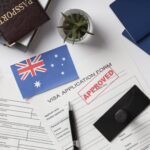Applying for Canadian permanent residency marks a significant milestone in your immigration journey. However, even the most meticulously prepared applications can face rejection due to one seemingly minor detail: photographs that don’t meet official requirements. In fact, incorrect photos are among the top reasons for application delays and rejections.
This comprehensive guide will walk you through every specification mandated by Immigration, Refugees and Citizenship Canada (IRCC) for permanent resident photo requirements. Whether you’re applying for your first PR card, renewing an existing one, or submitting an application to obtain permanent residence in Canada, this resource ensures your photographs meet all official standards.
Why Photo Requirements Matter
The photographs submitted with your application serve as official identification documents. They’re incorporated into your PR card and government records, making their quality and compliance with standards non-negotiable. Photos that don’t meet requirements can lead to:
- Application rejection
- Processing delays
- Additional fees for resubmission
- Postponed travel plans
- Extended waiting periods for permanent residency
Let’s dive into the exact specifications that will ensure your photos pass IRCC scrutiny.
Essential Photo Specifications at a Glance
Before diving into detailed requirements, here’s a quick overview of the fundamental specifications:
- Size: 50 mm wide × 70 mm high (2 inches × 2-3/4 inches)
- Face height: Between 31 mm (1-1/4 inches) and 36 mm (1-7/16 inches) from chin to crown
- Background: Plain white, untextured
- Expression: Neutral, mouth closed, eyes open
- Recency: Taken within the last 12 months
- Quality: Clear, sharp, in focus, professionally printed
- Format: Original photographs, not altered or digitally manipulated
Detailed Physical Photo Requirements
Size and Proportions
The Canadian government has precise requirements for PR photo dimensions:
- Overall size: 50 mm wide × 70 mm high (2 inches × 2-3/4 inches)
- Face height: The distance from chin to crown (natural top of head) must measure between 31 mm (1-1/4 inches) and 36 mm (1-7/16 inches)
- Position: Face and shoulders must be centered and squared to the camera
These measurements ensure consistency across all PR cards and government identification documents. Even small deviations from these dimensions can lead to rejection.
Photo Quality Requirements
Your photographs must be:
- Clear and sharp: No blurriness, pixelation, or softness
- Well-focused: Especially around facial features
- Professionally printed: On plain, high-quality photographic paper
- Original: Not digitally altered or enhanced
- Recent: Taken within the last 12 months
Note that home-printed photos or images printed on heavyweight paper are not acceptable. The photo must reflect your current appearance to serve as accurate identification.
Lighting and Exposure
Proper lighting is crucial for acceptable PR photos:
- Uniform lighting: Ensure even illumination across the entire face
- No shadows: Particularly around the face, ears, or background
- No glare or reflections: Especially important if wearing glasses
- Natural skin tone: Photos must accurately represent your natural complexion
Poor lighting is a common reason for photo rejection. When visiting a professional photographer, specifically mention these requirements.
Background Requirements
The background of your photo must be:
- Plain white: No patterns, textures, or decorations
- Untextured: Smooth surface with no visible grain or fabric patterns
- Contrasting with your face: Clear differentiation between your face and the background
- Shadow-free: No shadows cast on the background
Many applicants overlook background requirements, yet they’re strictly enforced by IRCC officials reviewing applications.
Facial Expression and Pose
Your expression and pose must follow these guidelines:
- Neutral facial expression: No smiling, frowning, or exaggerated expressions
- Mouth closed: Lips together naturally
- Eyes open and clearly visible: Not squinting or partially closed
- Facing straight ahead: Full frontal view of face and shoulders
- Head straight: Not tilted in any direction
While a neutral expression might seem unnatural, it’s essential for biometric identification and compliance with international standards for identity documents.
Photography Technical Requirements
Professional Photography
The IRCC requires photos taken by a commercial photographer. This ensures:
- Professional lighting setup
- Proper framing and composition
- Correct print quality
- Appropriate background
- Required information on the back
While it might be tempting to take photos yourself, especially with high-quality smartphone cameras, this doesn’t meet official requirements. Always use a professional photography service familiar with immigration photo specifications.
Photo Identification Information
On the back of one photo, the following information must be included:
- Subject’s full name
- Subject’s date of birth
- Photography studio’s name and complete address
- Date the photograph was taken
This information can be handwritten or stamped directly on the back of the photo. Stick-on labels are not acceptable. For digital photos, this information can be provided in a separate document, such as a receipt from the photography studio.
Digital Photo Requirements
If you’re submitting digital photos (for example, through the Permanent Residence Portal), they must meet these technical specifications:
- File format: JPEG (.jpg) or PNG (.png)
- Dimensions: Between 715 × 1000 pixels and 2000 × 2800 pixels
- File size: 4 MB or less
- Original digital photo: Directly from the photographer, not a scan of a physical photo
Digital photos must still adhere to all the physical photo requirements regarding facial expression, lighting, background, etc. The digital format simply allows for electronic submission rather than mailing physical copies.
Special Considerations
Religious Headwear
If you wear religious headwear daily, you may keep it on in your photo provided:
- Your full face is clearly visible from the bottom of your chin to your forehead
- The headwear doesn’t cast any shadows on your face
- The headwear doesn’t obscure any facial features
When submitting photos with religious headwear, it’s advisable (though not required) to include a brief note explaining that the headwear is worn for religious purposes.
Medical Considerations
The IRCC accommodates several medical situations:
Wheelchair Users:
- A plain white blanket can be placed over the wheelchair behind your head
- Ensure no shadows on facial features or background
- Facial features and edges of face must remain clearly visible
Medical Headwear or Nasal Cannula:
- These may be worn when required for medical reasons
- Eyes must remain clearly visible
- Include a signed explanation with your application
- Be prepared to submit a doctor’s letter if requested
Infants and Newborns:
- Minor variations in neutral expression are allowed
- Photos may be taken while sitting in a car seat with a white blanket placed behind the head
- No shadows should appear on the face, shoulders, ears, or background
- Hands (either the child’s or parents’) must not appear in the photo
Eyeglasses Guidelines
The rules regarding eyeglasses are:
- Regular prescription glasses may be worn if eyes remain clearly visible
- There must be no glare or reflection on the lenses
- Sunglasses and tinted eyeglasses are strictly prohibited
- Photos with red-eye effect or red-eye alterations are unacceptable
If your regular glasses tend to create glare, you might consider removing them for the photo, provided you can keep your eyes fully open without squinting.
Common Reasons for Photo Rejection
Understanding why photos get rejected can help you avoid these pitfalls:
- Poor contrast between face and background
- Shadows behind ears or on the background
- Hands or other objects visible in the picture
- Reflections on glasses
- Face not squared to the camera
- Facial features not clearly visible
- Open mouth or smiling
- Wearing tinted glasses
- Incorrect photo format or dimensions
- Digital alterations or enhancements
- Poor print quality or home-printed photos
- Hair covering facial features
Familiarizing yourself with these common issues can save you time, money, and frustration in the application process.
Tips for Getting Perfect PR Photos
Finding the Right Photographer
Not all portrait photographers are familiar with immigration photo requirements. Here’s how to find the right professional:
- Specifically ask for “Canadian permanent resident photos” when making your appointment
- Confirm they have experience with immigration photography
- Mention specific requirements like the size, background color, and information needed on the back
- Request multiple copies since most applications require more than one photo
- Verify the photos meet all requirements before leaving the studio
Many photography chains and passport photo services offer specialized immigration photography services, often at reasonable prices.
Preparing for Your Photo Session
To ensure the best results:
- Wear solid-colored clothing that contrasts with the white background
- Avoid white or very light clothing as it may blend with the background
- Skip heavy makeup that might alter your natural appearance
- Style your hair so it doesn’t cover your face or eyes
- Remove non-religious headwear like hats, bandanas, or decorative head accessories
- Practice a neutral expression that looks natural
What to Do If Your Photos Are Rejected
If your application is returned due to photo issues:
- Carefully read the rejection notice to understand exactly what was wrong
- Consult with a new photographer who specializes in immigration photos
- Bring the rejection notice to your photography appointment
- Consider consulting an immigration consultant if you’ve had multiple rejections
- Resubmit your application with new, compliant photos as soon as possible
Photo Requirements for Different Application Types
Permanent Resident Card Applications
When applying for a PR card, you’ll typically need:
- Two identical photos meeting all specifications
- Information written or stamped on the back of one photo
- Photos taken within the last 12 months
Applications for Obtaining Permanent Residence
For initial permanent residence applications:
- Check your specific application guide for the exact number of photos required
- All photos must be identical and meet the same specifications
- All accompanying family members usually need their own set of photos
Technological Advances in Immigration Photography
The Canadian immigration system is increasingly digital, with online portals and electronic application options. However, photo requirements remain stringent, whether submitted physically or digitally.
For digital submissions through the Permanent Residence Portal, you’ll need:
- Digital photos in JPEG or PNG format
- Correct pixel dimensions (between 715 × 1000 and 2000 × 2800 pixels)
- File size under 4 MB
- All the same quality requirements as physical photos
Conclusion
Successfully navigating Canada’s permanent resident photo requirements may seem daunting, but attention to detail here can prevent significant delays in your immigration journey. By ensuring your photographs meet every specification outlined in this guide, you’ll eliminate one of the most common reasons for application rejection.
Remember that these requirements are in place to ensure security and standardization of Canada’s permanent resident identification system. While some rules may seem strict, they’re essential for maintaining the integrity of Canada’s immigration programs.
Whether you’re beginning your journey toward Canadian permanent residency or renewing your status, proper photographs are a crucial component of your application. Take the time to get them right the first time, and you’ll avoid unnecessary delays in achieving your immigration goals.


